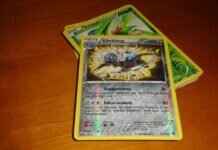This article provides a comprehensive guide on counting stitches in crochet, ensuring accuracy in your projects. By learning various techniques, tips, and addressing common issues, you can significantly enhance your crocheting skills.
Understanding the Basics of Crochet Stitches
Before you start counting stitches, it is vital to grasp the different types of crochet stitches. The basic stitches include chain, single crochet, double crochet, and slip stitch. Familiarity with these stitches is essential as it lays the groundwork for accurate counting. Each stitch has a unique structure, and recognizing these differences will help you identify them easily in your work.
Why Accurate Stitch Counting Matters
Accurate stitch counting is crucial for achieving the desired size and shape in your crochet projects. A miscount can lead to uneven edges or incorrect dimensions, which may require significant rework. Understanding how stitch counts affect the overall outcome ensures that your finished piece matches your expectations, whether it’s a cozy blanket or a delicate shawl.
Tools You Need for Counting Stitches
Having the right tools can simplify the process of counting stitches. Consider using:
- Stitch Markers: These are invaluable for marking the beginning of rows or rounds.
- Row Counters: Handy devices that track your progress as you crochet.
- Notebooks: Keeping a dedicated notebook for your projects can help you jot down stitch counts and notes.
Counting Stitches in Different Crochet Patterns
Different crochet patterns may require unique counting methods. For instance, in complex patterns with multiple stitch types, it may be beneficial to count stitches in segments. This approach helps maintain focus and accuracy, particularly in intricate designs. Always refer to the pattern instructions for specific counting guidance.
How to Count Stitches in Rows
Counting stitches in rows is a fundamental skill for crocheters. One effective method is to count each stitch as you complete it. Alternatively, you can count at the end of each row. This practice not only helps in keeping track but also allows you to catch mistakes early.
Counting Stitches in the Round
When crocheting in the round, counting can become more challenging. A helpful strategy is to use a stitch marker to denote the first stitch of each round. This technique allows you to keep track of your progress without losing your place. Additionally, counting each stitch as you go can prevent errors in the round.
Using Stitch Markers for Accurate Counting
Stitch markers can be invaluable tools for crochet counting. They help you identify the start of a round or the end of a row, making it easier to maintain an accurate stitch count. To use them effectively, place a marker in the first stitch of each row or round. This will serve as a visual cue and help you avoid losing your count.
Common Mistakes in Counting Stitches
Even experienced crocheters can make mistakes in counting stitches. Common errors include skipping stitches, miscounting at the beginning of a row, or forgetting to count chain stitches. To avoid these pitfalls, take your time and double-check your counts periodically, especially after completing a few rows.
How to Fix Mistakes in Stitch Counting
Mistakes happen, but knowing how to fix them is essential. If you realize you’ve miscounted, don’t panic! You can either frog (rip out) back to the last correct count or add stitches as needed. Familiarizing yourself with these techniques will save you time and frustration.
Tips for Keeping Track of Your Stitch Count
Maintaining an accurate stitch count can be challenging. Here are some practical tips:
- Count your stitches regularly, ideally at the end of each row or round.
- Use a row counter or a simple piece of paper to jot down counts.
- Take breaks to avoid fatigue, which can lead to mistakes.
Understanding Gauge and Its Impact on Stitch Counting
Gauge plays a significant role in crochet accuracy. Understanding gauge can improve your stitch counting and overall project success. Always check your gauge before starting a project, as it ensures that your stitches are consistent and your finished piece will match the intended size.
Practicing Your Stitch Counting Skills
Like any skill, practice is key to mastering stitch counting. Engage in various projects that challenge your counting abilities, such as intricate patterns or larger items. Over time, you’ll develop a rhythm and confidence in your counting skills, making your crochet experience more enjoyable.
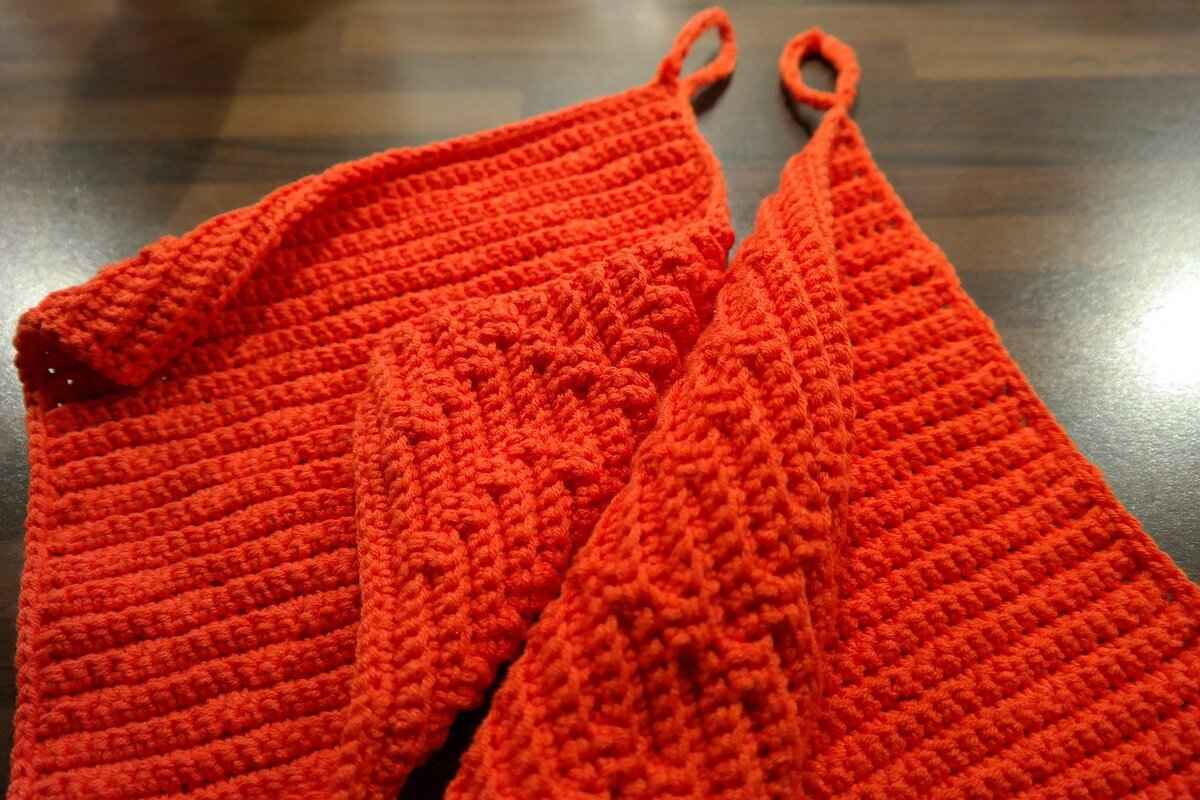
Understanding the Basics of Crochet Stitches
Before you start counting your crochet stitches, it is vital to have a solid understanding of the various crochet stitches that exist. Each stitch serves a unique purpose and contributes to the overall texture and design of your project. Familiarity with these stitches not only enhances your crocheting skills but also lays the groundwork for accurate counting, which is essential for achieving the desired outcome in your work.
Here are some of the most common crochet stitches:
- Chain Stitch (ch): The foundation of most crochet projects, this stitch creates a series of loops that form the base for subsequent stitches.
- Slip Stitch (sl st): Used for joining rounds or moving across stitches without adding height, this stitch is essential for seamless transitions.
- Single Crochet (sc): A basic stitch that creates a tight, dense fabric. It’s often used in amigurumi and other projects requiring structure.
- Half Double Crochet (hdc): This stitch is taller than a single crochet but shorter than a double crochet, providing a nice balance in fabric density.
- Double Crochet (dc): A versatile stitch that creates a looser fabric, commonly used in blankets and garments.
- Treble Crochet (tr): The tallest of the basic stitches, this one adds significant height and is often used in lacy patterns.
Understanding these stitches will not only help you in counting but also in recognizing stitch patterns and techniques used in various crochet projects. For example, when working with granny squares, knowing how to properly execute a double crochet is crucial for maintaining the correct stitch count.
Additionally, it is important to recognize that different patterns may include variations or combinations of these stitches. As you become more experienced, you will encounter advanced stitches such as the popcorn stitch or shell stitch, which can add intricate designs to your work. Mastering the basics will make it easier to learn these advanced techniques and understand how they affect your stitch counting.
In summary, developing a solid foundation in basic crochet stitches is essential for any crocheter. It not only enhances your skill set but also ensures that your stitch counting is accurate, leading to successful and satisfying projects. As you embark on your crochet journey, take the time to practice each stitch, and soon you will find yourself counting with confidence.
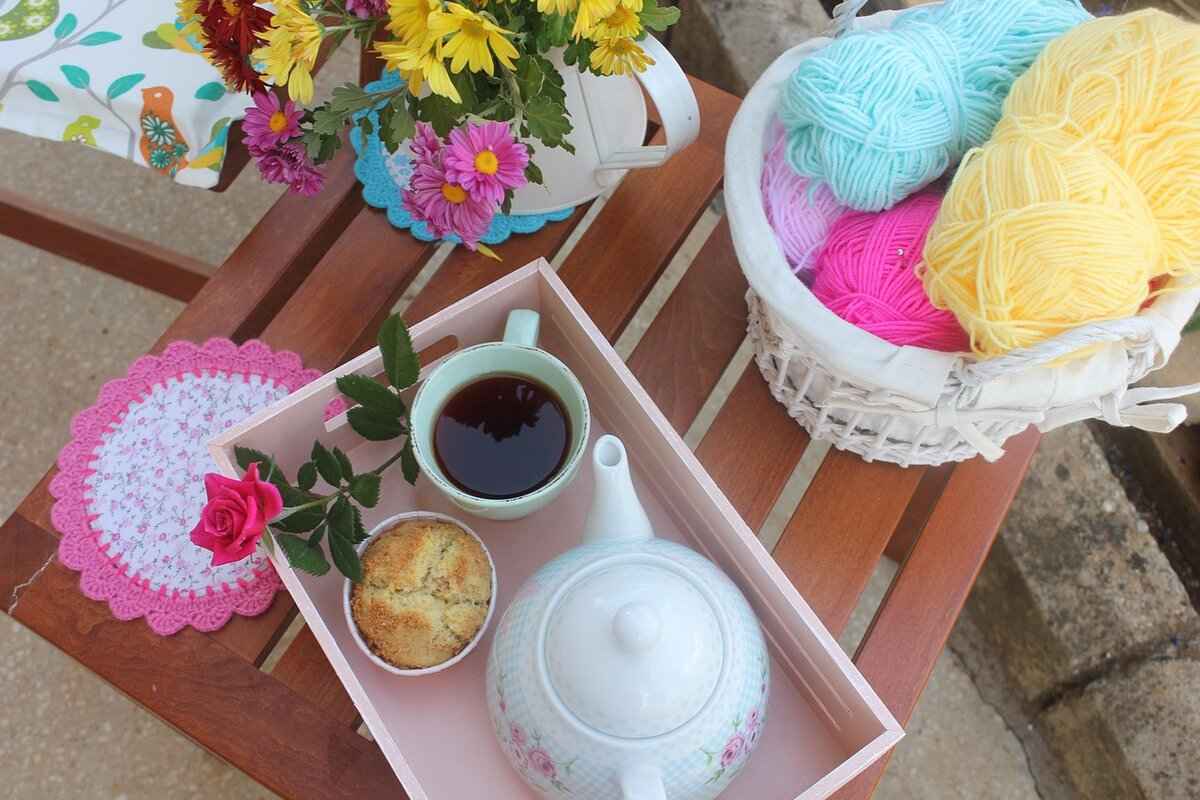
Why Accurate Stitch Counting Matters
Accurate stitch counting is not just a technical skill; it is a fundamental aspect of crochet that significantly influences the **final outcome** of your projects. When you crochet, every stitch contributes to the overall **size** and **shape** of your work. A small error in counting can lead to a finished piece that is either too large or too small, ultimately impacting the **design** and **functionality** of the item you are creating.
- Consistency in Size: Maintaining an accurate stitch count ensures that your project adheres to the specified dimensions. Whether you are crafting a cozy blanket, a fitted sweater, or a delicate doily, precision in counting is essential for achieving the intended size.
- Shaping and Structure: Different crochet patterns rely on specific stitch counts to create the desired shape. For example, in amigurumi, accurate counting is vital for shaping the body parts correctly. An error can result in disproportionate features, ruining the aesthetic appeal of your creation.
- Pattern Integrity: Many crochet patterns are designed with a specific stitch count in mind. If you deviate from this count, you may find that the pattern does not work as intended. This can lead to frustration and wasted materials.
- Time Efficiency: Mistakes in stitch counting can lead to time-consuming corrections. If you realize that your stitch count is off after several rows, you may have to frog (rip out) your work and start over, which can be discouraging. Accurate counting from the beginning saves time and effort.
Moreover, accurate stitch counting enhances your overall crocheting experience. It allows you to work with confidence, knowing that you are on track with your project. This confidence can lead to greater creativity, enabling you to experiment with more complex patterns and techniques without fear of making significant errors.
To assist with accurate stitch counting, consider using tools such as stitch markers, which can help you keep track of your count as you progress. Additionally, developing a systematic approach to counting, such as counting each stitch as you complete it, can further enhance your accuracy.
In summary, accurate stitch counting is crucial for achieving the desired size and shape in your crochet projects. It ensures consistency, maintains pattern integrity, and ultimately contributes to a more enjoyable crocheting journey. By prioritizing stitch counting, you can elevate your crochet skills and produce beautiful, well-crafted items that reflect your dedication and craftsmanship.

Tools You Need for Counting Stitches
When it comes to crochet, one of the most essential skills you can develop is the ability to count your stitches accurately. This not only ensures that your projects turn out as intended but also enhances your overall crocheting experience. To make the process of counting stitches easier and more efficient, utilizing the right tools can be a game-changer. Below, we will explore various tools that can assist you in keeping track of your crochet stitches effectively.
Having the right tools can simplify the process of counting stitches. Here’s a list of some of the most effective tools that every crocheter should consider:
- Stitch Markers: These small, often colorful tools are invaluable for marking specific stitches in your work. They can help you keep track of the beginning of a round or indicate where to make increases or decreases. Using stitch markers allows you to focus on your crocheting without constantly counting stitches.
- Row Counters: These handy devices help you keep track of the number of rows you’ve completed. Many row counters are designed to be worn on your finger, making them easily accessible while you work. They can be mechanical or digital, depending on your preference.
- Notebooks or Stitch Journals: Maintaining a written record of your projects can be helpful, especially for complex patterns. Use a notebook to jot down your stitch counts, notes on adjustments, and any other relevant information. This practice not only aids in counting but also helps you learn from past projects.
- Counting Apps: In our tech-savvy world, various apps are available for tracking stitches. These apps often come with additional features like pattern storage and reminders, making them an excellent choice for modern crocheters.
- Measuring Tape: While not a direct counting tool, a measuring tape is essential for checking the size of your work as you go. This can help you ensure that your stitch count aligns with your project’s intended dimensions.
Using these tools effectively can greatly enhance your crochet experience. For example, when using stitch markers, place them at the beginning of each round or after every ten stitches to help you keep track. If you’re using a row counter, make it a habit to click it after every completed row to avoid losing your place.
Incorporating a notebook into your routine can also be beneficial. Write down your stitch counts at the end of each row or round, and note any mistakes or adjustments you make. This will help you identify patterns in your crocheting and improve your counting skills over time.
For those who prefer technology, downloading a counting app can streamline your process. Look for apps that allow you to customize your counting experience, such as setting reminders or tracking multiple projects at once.
In conclusion, having the right tools at your disposal can significantly improve your ability to count stitches accurately in crochet. Whether you opt for traditional methods like stitch markers and notebooks or embrace modern technology with apps, finding the right combination of tools will help you achieve greater success in your crocheting projects.
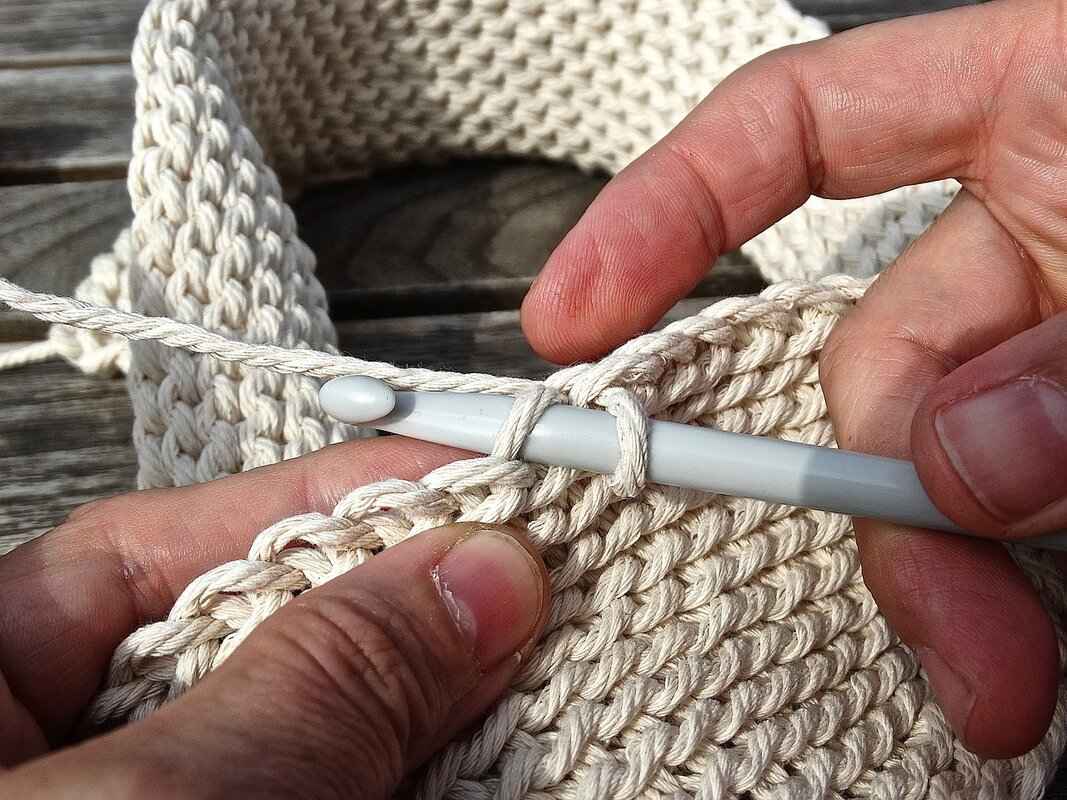
Counting Stitches in Different Crochet Patterns
When it comes to crochet, the complexity of patterns can vary significantly, influencing how you count your stitches. Different crochet designs may require unique counting methods, which can be essential for achieving the desired outcome in your projects. Understanding these differences is crucial for both beginners and seasoned crocheters alike.
For instance, in simple patterns such as single crochet or double crochet, counting stitches is relatively straightforward. You can easily keep track of your stitches by counting each one as you go. However, as you advance to more intricate patterns, like shell stitches or granny squares, the counting method may need to adapt. These patterns often involve clusters of stitches worked together, making it essential to develop a reliable counting technique that accommodates their structure.
Adapting Your Counting Technique
- Visual Markers: Use visual markers such as stitch markers or contrasting yarn to help you keep track of where you are in the pattern. This can be particularly helpful in complex designs where stitches may be skipped or worked into the same space.
- Row Counting: For patterns that repeat over several rows, consider keeping a notepad or using a counter app on your phone to record your progress. This way, you can easily refer back to your last counted row.
- Chunking: Break down the pattern into smaller sections or “chunks.” Count the stitches in each chunk before moving on, which can help prevent overwhelming confusion in more complex patterns.
Additionally, when working in the round, it’s vital to count differently than when crocheting in rows. In circular patterns, you may lose track of where the round begins and ends. Using a stitch marker to denote the start of each round can significantly enhance your counting accuracy.
Moreover, some patterns may require you to adjust your counting technique based on the stitch type. For example, in patterns that involve decreases or increases, it’s crucial to account for these changes in your stitch count. Keeping a tally of increases and decreases separately can help maintain overall accuracy.
Ultimately, mastering the art of counting stitches across different crochet patterns is a skill that improves with practice. As you become more familiar with various techniques and patterns, you’ll find that your ability to adapt your counting methods will enhance your crocheting experience, leading to more successful and satisfying projects.
In conclusion, developing a flexible approach to counting stitches in crochet not only aids in achieving pattern accuracy but also boosts your confidence as a crocheter. Whether you’re creating a simple scarf or an elaborate blanket, understanding how to adjust your counting technique based on the complexity of the pattern is vital for your success.
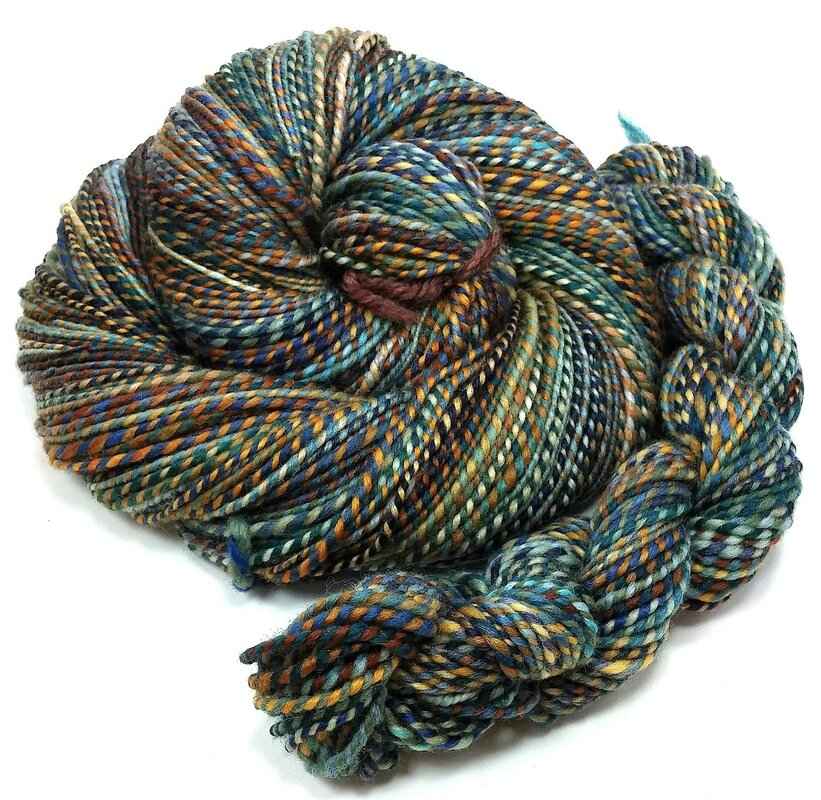
How to Count Stitches in Rows
Counting stitches in rows is a fundamental skill for crocheters, whether you are a beginner or an experienced artisan. Understanding how to accurately count your stitches as you progress through each row can significantly impact the quality and accuracy of your finished project. This section will explore effective methods to help you master this essential skill.
- Visual Counting: One of the simplest methods to count stitches is to visually assess each stitch as you complete it. This technique involves looking at the top of each stitch and ensuring that you can see the correct number of V shapes, which represent the stitches. It’s helpful to count out loud or use your fingers to keep track of your progress.
- Using a Stitch Marker: Placing a stitch marker at the end of each row can help you keep track of your stitch count. After finishing a row, simply move the marker up to the next row. This method not only helps in counting but also serves as a reminder of where your row begins and ends.
- Row Counting Techniques: For patterns involving multiple stitches, such as double crochets or half double crochets, it’s essential to develop a rhythm. Count the stitches as you work, grouping them into sets of five or ten to make the counting process easier. This technique can help reduce errors and improve your overall efficiency.
- Written Records: Keeping a written record of your stitch count can be beneficial, especially for complex patterns. Use a notebook or digital app to jot down the number of stitches completed in each row. This way, if you need to pause or take a break, you can easily pick up where you left off.
In addition to these methods, it’s important to recognize common issues that may arise while counting stitches. For instance, losing track of your count can happen easily, especially in intricate patterns. If you find yourself confused, it’s advisable to stop and recount the stitches in the current row. This pause can save you time in the long run by preventing mistakes that may require unraveling multiple rows.
Furthermore, if you ever find that your stitch count is off, don’t panic. Take a moment to identify where the discrepancy occurred. Often, it can be traced back to the beginning of the row or where you transitioned between different stitches. Learning to troubleshoot these issues will enhance your confidence and skill as a crocheter.
In conclusion, mastering the art of counting stitches in rows is crucial for achieving precision in your crochet projects. By employing various techniques, such as visual counting, using stitch markers, and keeping written records, you can significantly improve your stitch counting abilities. With practice and attention to detail, you’ll find that counting stitches becomes a natural and effortless part of your crocheting routine.

Counting Stitches in the Round
is a crucial skill for crocheters who want to create beautiful circular patterns. Unlike working in rows, crocheting in the round can often lead to confusion regarding stitch counts. This article will explore effective strategies to help you keep track of your stitches, ensuring accuracy in your projects.
When crocheting in the round, it’s essential to establish a clear counting method right from the start. One popular technique is to use a stitch marker. Placing a stitch marker in the first stitch of each round can help you easily identify where each round begins and ends. This practice not only aids in counting but also helps maintain the integrity of your pattern.
- Choose the Right Stitch Marker: There are various types of stitch markers available, including locking markers, clip-on markers, and even simple pieces of yarn. Experiment with different styles to find one that works best for you.
- Count as You Go: While working in the round, take a moment to count your stitches after completing each round. This will help you catch any mistakes early on, preventing larger issues later.
- Use a Notepad: Keeping a small notepad handy can be beneficial. Jot down the number of stitches completed at the end of each round to maintain an accurate count throughout your project.
Another effective strategy is to group your stitches. For example, if your pattern calls for 24 stitches in a round, you might group them into sets of 6. This method can make counting more manageable and less overwhelming. You can also use color coding to differentiate between groups or rounds, adding a visual element to your counting process.
It’s also important to understand the nature of the stitches you are using. For instance, if you’re working with double crochets, the stitch height can affect how you perceive your round. Make sure to account for any chain stitches that serve as the first stitch of the round, as they can throw off your count if not considered.
In some cases, increasing stitches in a round can complicate counting. If your pattern requires increases, mark these stitches as you go. This will help you keep track of how many stitches you started with and how many you should have by the end of the round.
Lastly, don’t hesitate to practice. The more you crochet in the round, the better you will become at counting stitches. Start with simple patterns and gradually increase the complexity as your confidence grows. With time, you’ll find that counting stitches in the round becomes second nature.
In summary, mastering the art of counting stitches in the round is essential for any crocheter looking to achieve accuracy in their work. By utilizing tools like stitch markers, grouping stitches, and maintaining a clear counting method, you can enhance your crocheting experience and produce stunning circular patterns with ease.

Using Stitch Markers for Accurate Counting
Stitch markers are essential tools for crocheters looking to improve their counting accuracy. They serve as visual cues, allowing you to keep track of your stitches effortlessly. Whether you’re a novice or an experienced crocheter, understanding how to use stitch markers effectively can significantly enhance your crocheting experience.
One of the primary benefits of using stitch markers is that they help in identifying specific points in your work. For instance, if you’re working on a complex pattern, placing a stitch marker at the beginning of each row or round can prevent you from losing your place. This simple action can save you from the frustration of having to count stitches repeatedly or, worse, unraveling your work due to lost count.
There are several types of stitch markers available, each designed for different purposes. Locking stitch markers are particularly useful for marking stitches you want to keep track of, as they can be easily attached and removed without the risk of falling off. Split ring markers are great for marking the beginning of a round, while clip-on markers can be used to highlight specific stitches within a row. Understanding the different types will allow you to choose the right marker for your project.
- Placement: When using stitch markers, consider where to place them for maximum efficiency. For example, placing a marker every 10 stitches can help you quickly verify your count.
- Color Coding: Utilize different colors of stitch markers to indicate various sections or patterns in your work. This visual differentiation can make it easier to follow complex designs.
- Adjustability: If your pattern changes, don’t hesitate to adjust the position of your stitch markers. Flexibility is key to maintaining accuracy as you progress.
Another effective technique is to use stitch markers in combination with a counting method. For example, you can pair stitch markers with a tally system or a digital counter to keep track of your progress. This dual approach allows for enhanced accuracy, especially in intricate patterns where losing count can easily happen.
It’s also worth noting that stitch markers can be used to help identify mistakes. If you notice a discrepancy in your stitch count, the markers can guide you to the exact row or round where the error occurred, making it easier to correct it without having to frog your entire project.
In summary, incorporating stitch markers into your crochet routine can greatly enhance your counting accuracy. By understanding their various types and optimal usage, you can streamline your crocheting process, reduce errors, and ultimately create more polished and professional-looking projects. Remember, the key to successful crochet lies in the details, and stitch markers are an invaluable tool in ensuring those details are just right.
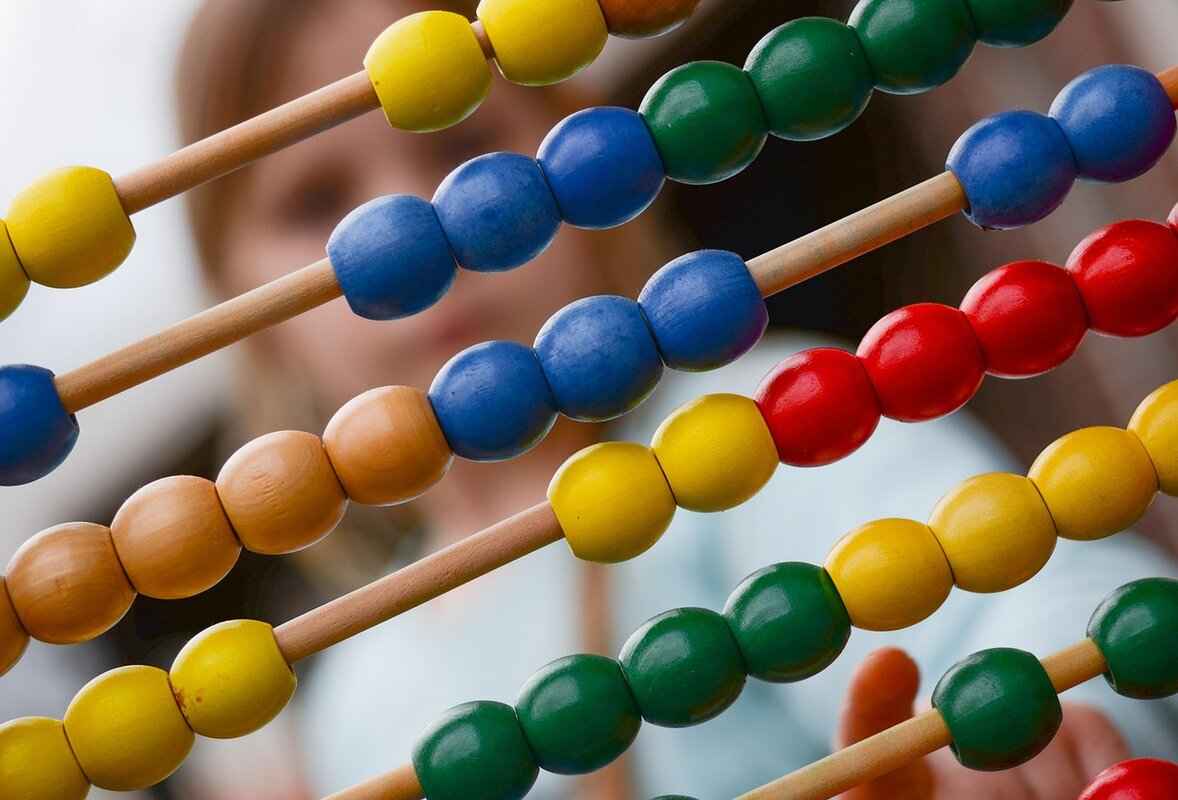
Common Mistakes in Counting Stitches
Even the most seasoned crocheters can encounter challenges when it comes to counting stitches accurately. Mistakes in counting can lead to significant issues in your finished projects, including uneven shapes and sizes. This section explores common errors that crocheters make and offers practical solutions to avoid them.
- Miscounting Due to Distractions: One of the most frequent mistakes is losing track of your stitch count due to distractions. Whether it’s a conversation, a television show, or even a pet, distractions can cause you to skip stitches or miscount. To combat this, try to find a quiet space or use noise-cancelling headphones to help you focus.
- Inconsistent Counting Methods: Some crocheters switch between different counting methods, which can lead to confusion. For example, counting stitches in one project by using a tally system and in another by simply keeping a mental note can create inconsistencies. Choose a method that works best for you and stick with it throughout your project.
- Ignoring Pattern Repeats: Many crochet patterns include repeat sections. Failing to account for these repeats can result in an inaccurate stitch count. Always pay close attention to the instructions, and consider using a row counter or a stitch marker to keep track of where you are in the pattern.
- Overlooking Foundation Chains: The foundation chain is critical for establishing the base of your project. Forgetting to count these initial stitches can throw off the entire pattern. Make it a habit to double-check your foundation chain before moving on to the first row.
- Not Using Stitch Markers: Stitch markers are invaluable tools for crocheters, especially for marking the beginning of a round or a specific stitch. Neglecting to use them can lead to confusion and miscounts. Incorporate stitch markers into your routine to help maintain accuracy.
- Counting the Wrong Stitches: It’s easy to mistakenly count a stitch that isn’t part of your intended count, especially in intricate patterns. Always ensure you are counting the correct stitches, and if necessary, refer back to your pattern to confirm.
By being aware of these common mistakes and implementing the suggested strategies, you can significantly improve your stitch counting accuracy. Remember, practice makes perfect, and the more you crochet, the better you’ll become at keeping track of your stitches. Embrace the learning process, and don’t be discouraged by occasional errors; they are part of the journey!
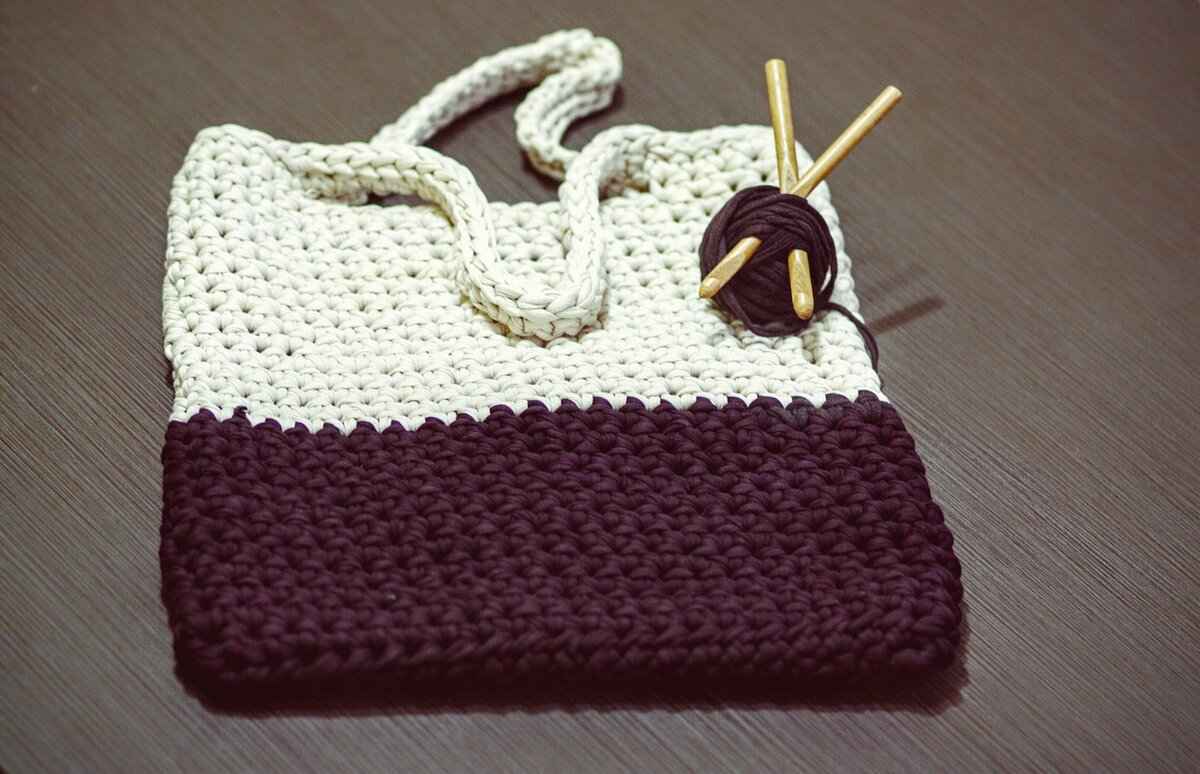
How to Fix Mistakes in Stitch Counting
Mistakes in crochet stitch counting are common, even among seasoned crocheters. The key to maintaining the integrity of your project lies in knowing how to effectively correct these errors without the need to unravel your entire work. Here are some practical techniques to help you fix stitch count mistakes efficiently.
- Identify the Mistake: The first step in fixing a stitch count error is to pinpoint where the mistake occurred. Carefully review your work, counting the stitches in the affected area. A simple stitch counter or a piece of paper can help keep track of your counts as you work.
- Use Stitch Markers: If you realize that you’ve made a mistake, consider placing a stitch marker in the last correct stitch. This will serve as a reference point when you start correcting the error. It’s an effective way to avoid losing your place in the pattern.
- Frog Back to the Mistake: One of the most common methods to fix a stitch count error is to frog (unravel) back to the point of the mistake. Carefully pull out the stitches until you reach the stitch marker, allowing you to start fresh from that point. This method ensures that your stitch count will be accurate moving forward.
- Add or Remove Stitches: If you’re only off by one or two stitches, you may not need to frog back. Instead, consider adding or removing stitches to correct the count. For example, if you are short by one stitch, you can add an extra stitch in a less noticeable area. Conversely, if you have an extra stitch, you can skip a stitch in the next row.
- Check Your Gauge: Sometimes, mistakes occur due to incorrect gauge. Ensure that your tension is consistent throughout your project. If you find that your stitches are too tight or too loose, adjust your hook size or yarn tension accordingly. This can help prevent future counting errors.
- Take Breaks: Fatigue can lead to mistakes in counting. It’s important to take regular breaks to refresh your mind. When you return, you’ll be more focused and less likely to make counting errors.
Correcting stitch count errors is a vital skill in crochet that can save your project from becoming a frustrating experience. By employing these strategies, you can maintain the accuracy of your work and enjoy the creative process. Remember, every crocheter makes mistakes; the important part is how you address them. With practice and patience, your stitch counting skills will improve, allowing you to create beautiful crochet pieces with confidence.
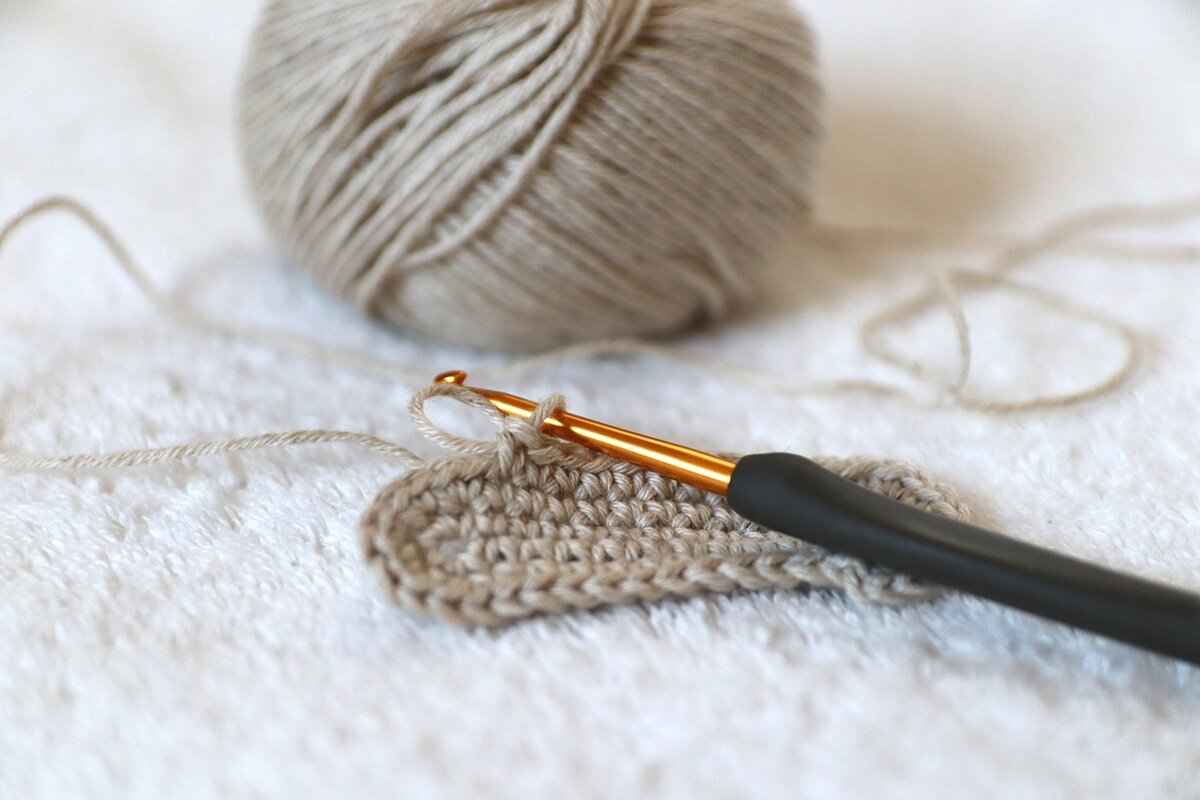
Tips for Keeping Track of Your Stitch Count
Keeping track of your stitch count while crocheting can be a daunting task, especially for beginners. However, with the right strategies and tools, you can ensure that your projects turn out as intended. Here are some practical tips to help you maintain an accurate stitch count throughout your crochet journey.
- Use Stitch Markers: One of the most effective ways to keep track of your stitches is by using stitch markers. Place them at the beginning of each row or after a specific number of stitches to help you remember where you are in your pattern.
- Count as You Go: Instead of waiting until you finish a row or round, count your stitches as you crochet. This habit can help you catch mistakes early and prevent larger issues down the line.
- Keep a Notebook: Jotting down your stitch count in a notebook can be incredibly helpful. You can note the number of stitches in each row and any changes you make to the pattern, ensuring you have a reference point for future rows.
- Use a Row Counter: A row counter can be a game-changer for crocheters. These tools allow you to keep track of your rows automatically, freeing you to focus on your stitching.
- Set Reminders: If you’re working on a lengthy project, set reminders on your phone or use a timer to prompt you to check your stitch count regularly.
- Practice Consistency: Maintaining a consistent tension while crocheting can significantly reduce counting errors. Try to keep your stitches uniform in size to make counting easier.
- Take Breaks: If you find yourself losing track of your count, take a short break. A fresh mind can help you refocus and accurately assess your progress.
By implementing these strategies, you can enhance your ability to keep track of your stitch count, leading to more successful and enjoyable crochet projects. Remember, practice makes perfect, so don’t be discouraged if you make mistakes along the way. With time and experience, you’ll find the methods that work best for you.

Understanding Gauge and Its Impact on Stitch Counting
Gauge is a fundamental concept in crochet that significantly influences the accuracy of your projects. It refers to the number of stitches and rows per inch, which can vary based on the yarn, hook size, and personal tension. Understanding gauge is crucial for ensuring that your finished product matches the intended size and design of the pattern.
When you crochet, the tension you apply affects how tightly or loosely your stitches are formed. If your tension is too tight, you may end up with a smaller project than expected. Conversely, if your tension is too loose, your project may be larger or have an undesired drape. Therefore, taking the time to establish your gauge can save you from potential frustration and wasted materials.
To determine your gauge, you can create a swatch. A swatch is a small sample of crochet that allows you to measure your stitches and rows. Here’s how to do it:
- Choose Your Yarn and Hook: Select the yarn and hook size you will use for your project.
- Crochet a Swatch: Make a square swatch, typically 4×4 inches, using the stitch pattern from your project.
- Measure Your Swatch: Once completed, lay your swatch flat and measure the number of stitches and rows within a 4-inch square.
Once you have your gauge, you can compare it to the pattern specifications. If your gauge differs from what the pattern indicates, you may need to adjust your hook size or tension. For example, if your swatch shows fewer stitches than required, try using a smaller hook or crocheting with a firmer tension. If you have more stitches, switch to a larger hook or relax your grip.
Understanding gauge not only improves your stitch counting but also enhances your overall project success. It allows you to make informed adjustments, ensuring that your finished piece is the correct size and shape. Additionally, being mindful of gauge helps you develop a better sense of your crocheting style, leading to greater consistency in your work.
In summary, gauge is an essential aspect of crochet that directly impacts stitch counting and project outcomes. By taking the time to measure and adjust your gauge, you can achieve the desired results in your crochet projects, making your crafting experience more enjoyable and fulfilling.
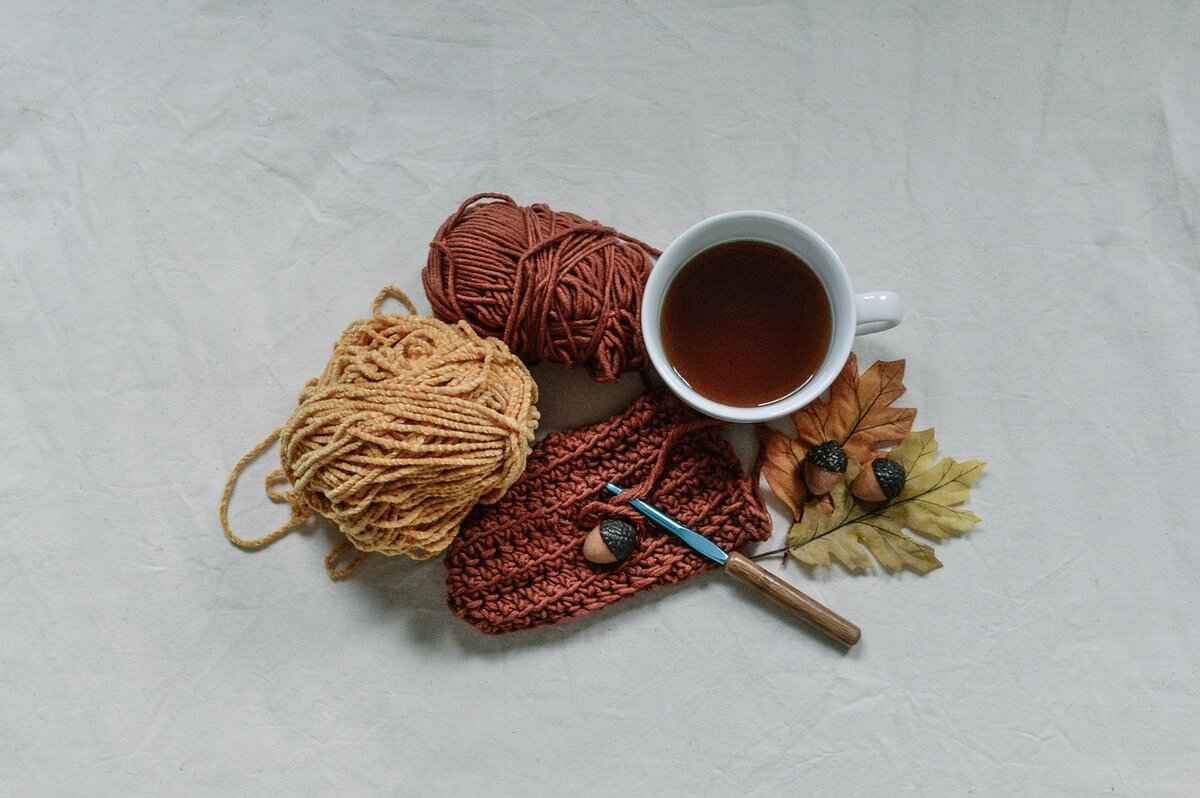
Practicing Your Stitch Counting Skills
Mastering the art of stitch counting in crochet is essential for achieving precise results in your projects. Just like any other skill, consistent practice is the key to becoming proficient. This section will explore various exercises and projects designed to help you enhance your counting abilities, making your crocheting experience more enjoyable and accurate.
One effective way to practice counting stitches is through repetitive exercises. Start with simple patterns that utilize basic stitches such as single crochet, double crochet, or half double crochet. Repeating these basic stitches in rows allows you to focus solely on counting without the added complexity of intricate designs. For instance, try crocheting a swatch of 20 single crochets, ensuring that you count each stitch out loud. This auditory reinforcement can help solidify your counting skills.
Additionally, consider incorporating varied stitch patterns into your practice routine. Once you feel comfortable with basic stitches, challenge yourself with patterns that include increases, decreases, and different stitch types. For example, practice a simple increase pattern by crocheting two stitches into the same stitch at regular intervals. This will not only test your counting skills but also help you understand how different stitches affect your overall count.
Another valuable exercise is to work on small projects that require accurate stitch counting. Items like dishcloths or small bags are perfect for this purpose. As you crochet these items, pay close attention to your stitch count, ensuring that you maintain the correct number throughout the project. This hands-on approach will reinforce your skills and help you identify any discrepancies in your counting.
Joining a crochet group or community can also provide a supportive environment for practicing your stitch counting. Engaging with fellow crocheters allows you to share techniques and troubleshoot counting issues together. Consider organizing a stitch counting challenge within your group, where each member works on a project with a specific stitch count goal. This can motivate you to stay focused and improve your skills.
Finally, keep a stitch counting journal to track your progress. Documenting your practice sessions, including the number of stitches counted and any mistakes made, can help you identify patterns in your counting habits. Over time, you will see improvement in your accuracy and confidence in your abilities.
In summary, the journey to mastering stitch counting in crochet is one that requires patience and consistent practice. By engaging in repetitive exercises, tackling varied patterns, working on small projects, collaborating with others, and maintaining a stitch counting journal, you will refine your counting abilities and enhance your overall crocheting skills.
Frequently Asked Questions
- How do I count stitches accurately in crochet?
To count stitches accurately, start by familiarizing yourself with the basic stitches. Use a consistent method, whether it’s counting every stitch as you go or counting in groups. Keeping a tally on paper can help too!
- Why is stitch counting important?
Stitch counting is crucial because it ensures your project turns out the right size and shape. Imagine trying to fit a square peg in a round hole—without accurate counts, your crochet might end up looking more like abstract art than a cozy blanket!
- What tools can help with counting stitches?
Tools like stitch markers, row counters, and even apps can make counting easier. These tools help keep your place, so you can focus on enjoying your crochet rather than stressing over where you left off!
- How can I fix mistakes in my stitch count?
Don’t panic! If you find a mistake, you can either frog (rip out) your work back to the error or use techniques like adding stitches or decreasing to correct it. Remember, every crocheter makes mistakes—it’s all part of the creative journey!
- What is gauge and why does it matter?
Gauge refers to the number of stitches and rows per inch. It’s essential because it affects the size of your finished project. Think of it like baking—a pinch too much or too little can change the entire outcome!



